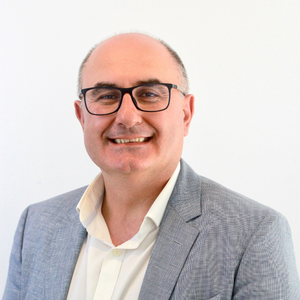What we covered in our chat
In this episode of the Well Workplaces podcast, I had the pleasure of speaking with Arthur Papagiannis, founder and CEO of AP Psychology and Consulting Services about the evolving landscape of workplace wellbeing. We covered everything from diagnosing risks to redesigning roles and explored how businesses - big and small - can create safer, healthier environments for their people.
The first step to workplace wellbeing
Arthur emphasised that workplace wellbeing starts with proper diagnosis. Just like in health care, businesses need to identify their risks before rushing to solutions. He pointed out that many companies start with broad, feel-good wellbeing initiatives without first understanding the specific psychosocial risks their employees face.
The key, Arthur explained, is gathering data through surveys, conversations, and risk assessments. This not only highlights problem areas—like high stress levels, poor leadership practices, or lack of role clarity—but also ensures any interventions are tailored and effective.
Merging HR and Health & Safety roles
One of the most interesting points Arthur raised was about the growing intersection of People & Culture (HR) and Health & Safety. Traditionally, these teams operated in separate silos—HR focused on leadership and culture, while Health & Safety managed physical risks and compliance.
But with the rise of psychological health and safety, those lines are blurring. Forward-thinking organizations are combining these functions to create a unified strategy for both physical and mental wellbeing. Arthur sees this shift as essential, as it moves companies away from fragmented solutions and toward a more integrated, strategic approach.
The importance of work design
A major theme of our conversation was work design—something Arthur described as the biggest challenge for many businesses right now. Work design involves structuring roles and tasks in ways that reduce stress and burnout, rather than simply responding to issues after they arise.
Arthur shared a simple but powerful example: a company struggling with workplace bullying initially considered running a series of awareness workshops. But after digging deeper, they realized a core issue was a lack of proper equipment, which was causing frustration and conflict. Addressing the work design problem—by improving resources—helped alleviate the tension.
The takeaway? Real change happens when organisations move beyond surface-level solutions and tackle the root causes of workplace stress.

Practical solutions on a budget
We also discussed how these concepts apply to small and medium businesses. Arthur acknowledged that smaller teams often lack the resources for complex strategies, but that doesn’t mean they can’t create healthy workplaces.
The foundation, he explained, is role clarity. When employees don’t know what’s expected of them, stress levels rise. Small businesses can start by developing clear job descriptions, offering basic training, and fostering open conversations about workplace risks.
Arthur highlighted his work with Healthy Heads in Trucks and Sheds, where they provided small logistics businesses with ready-made policies and training guides—helping them build better work environments without overloading already busy owners.
The future of workplace wellbeing
To round out the interview, I asked Arthur about the future of workplace wellbeing. He believes we’re heading toward a world where psychological and physical safety are fully integrated. Right now, psychological health and safety is still catching up to its physical counterpart, but the shift is happening.
Arthur predicts that in the next 5 to 10 years, workplaces will mature in how they tackle wellbeing—moving past awareness campaigns and focusing on systemic changes in leadership, culture, and work design. As he put it, "We’re asking the right questions now, which means we’ll be much better at this in the future."
Final Thoughts
This conversation with Arthur was a powerful reminder that true workplace wellbeing goes beyond free yoga classes and fruit bowls. It starts with data, integrates psychological and physical safety, and focuses on practical work design.
Whether you're running a small business or leading a large organisation, the key is to diagnose the risks, create clear strategies, and focus on meaningful, systemic change.
It’s clear there’s still work to do, but the progress being made is encouraging—and I’m excited to see how this space evolves over the coming years.
Written by Tom Bosna
March 2025